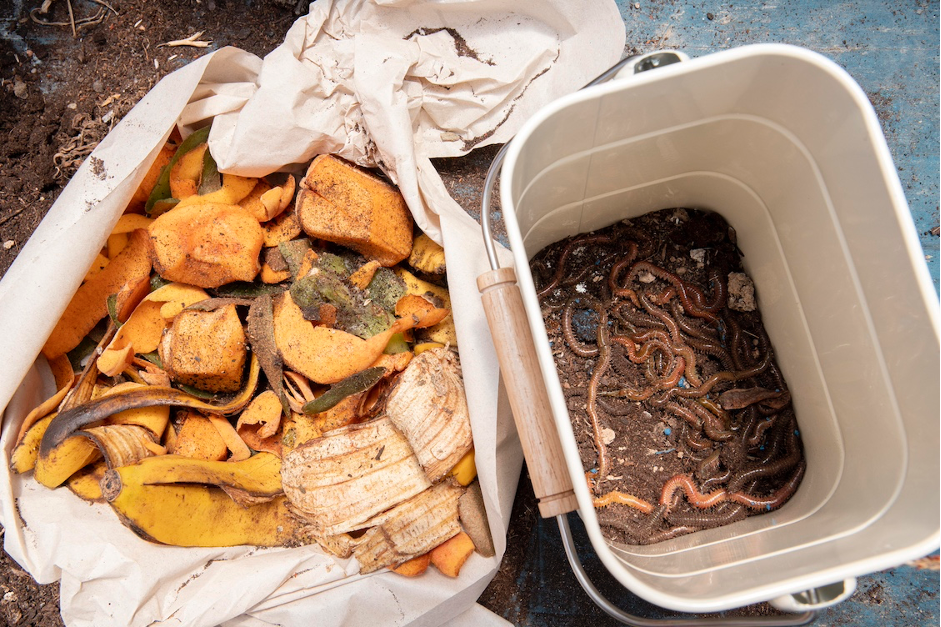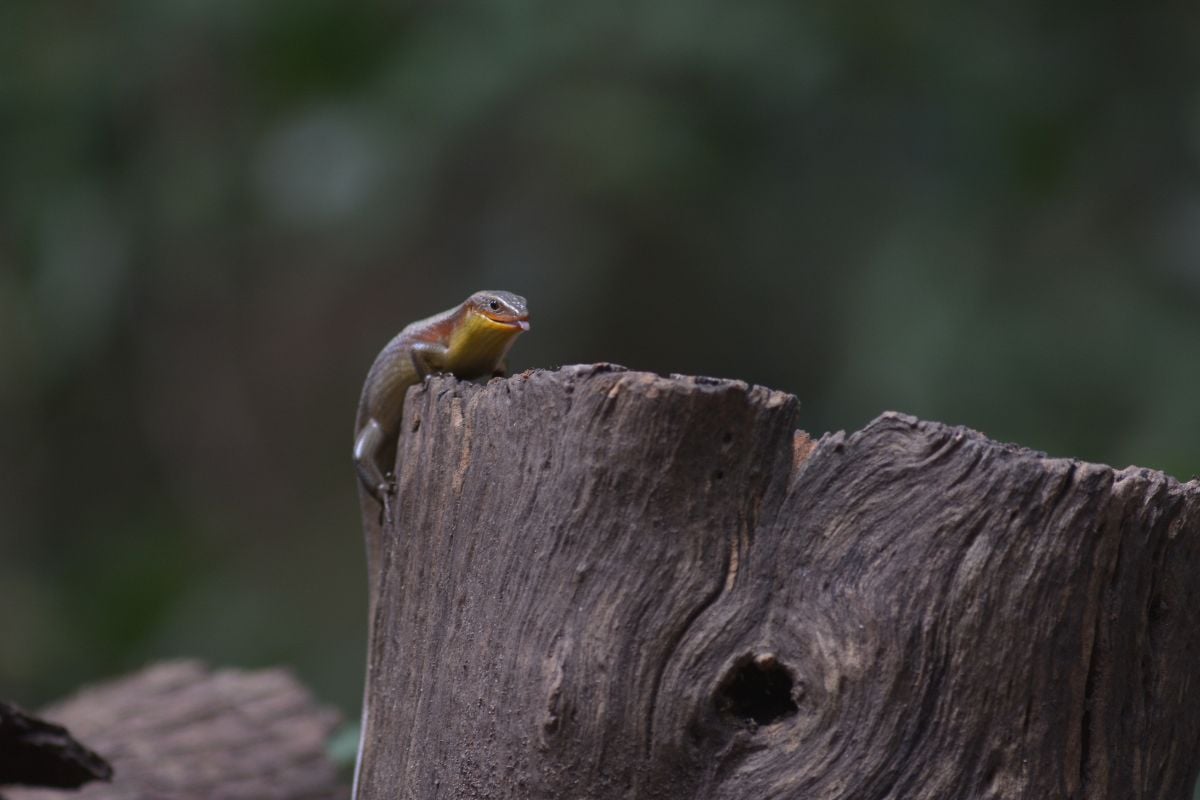Fruit Flies, Fungus Gnats and Maggots in compost
You will experience some common household pests inside your worm bin should you neglect it over time. Along the way, you may also be able to encounter annoying insects such as fruit flies, fungus gnats or even maggots in compost. So you might want to give your worm bin, and of course your worms some regular care and maintenance. You will certainly need to do this to help you keep your worm composter free from pests. Know these insects in more detail by reading more from this article.
Pests are typically drawn to the smell of wastes
These insects are usually drawn to wastes that are packed with nitrogen, all the more when it’s the decaying kind. Let’s take flies for example. When they do find something that attracts their sense of smell, they immediately look for this. Now if it happens to be your fully exposed red wiggler worms composter, then you’re in trouble. The adult fly will surely find organic scraps that it can gorge on, and will eventually leave its eggs on your compost. Now if you haven’t noticed this yet, and time passes by, their eggs will hatch, and will then turn into maggots. These young insects will then eat your compost. As easy as that. So one word of advice though: Always keep your worm composter closed. Your compost worms will also be grateful for that.
Pest # 1: Fruit Flies
Fruit Flies are typically the ones that you see hovering over your exposed fruits. So you can just imagine these insects flying in and out of a composting worms bin. These small objects won’t harm you in any way but they can surely be a big annoyance to anybody who sees it. Anyway, their bodies are quite round and their color ranges from an orange to light brown shade.
Now if you’ve already seen these insects by your red wigglers composter, then there might be a lot of fruit skins (especially banana peels) inside it. What you can do to get rid of these pests is to take these peels out. You can only add these back into the bin should there be no more presence of these flies.
Pest # 2 Fungus Gnats
Fungus Gnats are also of the flying kind, and are easily recognized for their black colored bodies. These pests are also very attracted to things such as fungus (thus the name) and moisture. And what better way then to feed their appetite is to swarm around a vermicomposting bin! But don’t be fooled as these insects can be both seen inside or outside of your home. They are that resourceful. So just like Fruit Flies, you can also get rid of these by taking out the things that they’re drawn in. But you can’t take out both moisture & fungus from your compost bin. But what you can do is to leave the bin slightly opened. What will happen here is the top layer of the compost will dry a little, whilst the lower portion of the compost will still be kept moist. These insects will now be drawn to the base of the bin rather than on top of it.
Pest # 3: Maggots
These 1/2-inch long, young insects are typically of a grayish brown color (the particular ones that are seen inside a red worms bin), and are very attracted to worm composters (just like fruit flies and fungus gnats). They’re actually good decomposers and won’t harm your worms but having them inside your worm bin will be such a big annoyance. But to experience maggots in compost, and getting rid of them at their peak will be harder on your end. So what you can do to be relieved from experiencing these common household pests further is to put in ample amounts of dry bedding materials. These will be able to soak-up excess moisture inside the composter. So if your bedding is drier (but not too dry though), then there will be smaller numbers of these insects being around after some time.
Uncle Jim’s recommends the Worm Kits
Experience the thrills of having your very own pre-packaged Worm Kits. With these, you can immediately start recycling organic scraps at home. Check-out our assortment of Worm Kits, and also get many more features in return!
To know more about the product, check the Worm Kits here.









13 thoughts on “Common Household Pests inside the Worm Bin”
I have an infestation of tiny white insects that crawl throughout my red wiggler worm bin. What are these? Are they harmful to the worms? How do I get rid of them?
Tiny black critters start crawling out of the bin when I turn the compost (and associated worms) to aerate it. What are they, and what can I do about them?
l have hundreds of very tiny copper round bugs that stay in clusters in my worm bin about the size of a pin head. I’d like to know what they are and how i might get rid of them.
Lin, I have had these many times, they are mites they seem to like it wet so I kept my indoor one a little dryer this year and they did not go crazy, my worm population was higher this year too. You can “drain” them by running water over it or you can torch the clusters with a handheld blow torch. The torch method is gonna work better since you are not adding water to situation.
repost with correvtions 6/10/20
I’ve been having a terrible problem with gnats and fungus flies in my worm bin of late. I know I need to harvest my compost.
As a chemist, I started considering what natural insecticidal plants I had handy that I could add to the worm bin to address gnats.
In my research I ran across the following article:
Mansour, Sameeh & Ibrahim, R.M. & Elgengaihi, Souad. (2014). Insecticidal activity of chicory (Cichorium intybus L.) extracts against two dipterous insect-disease vectors: Mosquito and housefly. Industrial Crops and Products. 54. 192–202. 10.1016/j.indcrop.2014.01.011.
Having a can of New Orleans Cafe Du Monde coffee around (I’m from south Texas), I added a generous 1/4″ layer to the top of the worm bin. This coffee contains a significant amount of (insecticidal) chicory. I used the rough fresh coffee grind and not the extracted grounds.
To my surprise, in 24 hours I had no more fungus gnats or fruit flies. It seems that the chicory is safe for the worms.
If I could get my hands on some beignets up north I might add those just for a treat!
Science!
I have an infestation of small flies that are triangular looking on the wall. I thought I got rid of them, by washing the worms after removing the compost. They are back. They are not fruit flies. They were not attracted to the apple cider vinegar trap. They stick to fly paper, and I kill dozens a day with a swatter. I would like to identify them and get rid of them. My bin is indoors, though at one time outdoors. I keep it in my laundry room and the walls are spattered with dead flies. I live in Vermont, and we need to compost by law.
Hi Melinda,
Look up Clogmia albipunctata in Wikipedia. If that’s not it, try an app like iNaturalist where you take a photo of any flora or fauna and it will help you identify it.
Good luck!
Hi Greg, I just ordered that New Orleans Cafe Du Monde coffee that you mentioned. I really hope that I have the same success. Thanks for the tip!
I have a vermicomposting in my house (for the daycare kids), Its almost 11 months old.. today I noticed little white bugs. What are they are how do I get rid of them
Same issue
I have recently found one inch by 3/8 inch, dark worm like creatures with a pointy nose, near my worm bin. They kinda look like a dried worm but are alive. I first thought they were escapees from the worm bin. Now I’m not sure. Any ideas???
I have the clogmia fly infestation also and it is bad. The indoor compost bin is the source. I am also required by Vermont law to keep compost out of the landfill and really want to keep my worms alive through the winter by Uncle Jim’s indoor system for managing my compost. I don’t think this is going to work! I didn’t have this problem last winter.
Maybe there is a way to make the composting material too dry for the flies? Any ideas?
Hello Ruth;
Vermicomposting is a bit different then regular composting. Worms should be fed only what they can consume in 3-4 days. Overfeeding them will cause too much food in the bin that will become anaerobic and compromise the compost, the worms and draw insects to the bin. It is best to have enough worms to handle your composting needs. 1000 Red Composting Worms will eat about 1/2 pound of food daily, maximum if all of the conditions are good and you have healthy, happy worms. The trick is to feed them only when the previous food is almost gone.
You are more than welcome to call our Customer Service line where we can assist you further and help you to get your bin in better condition. That number is 800.373.0555. Thank you.
Uncle Jim’s Worm Farm